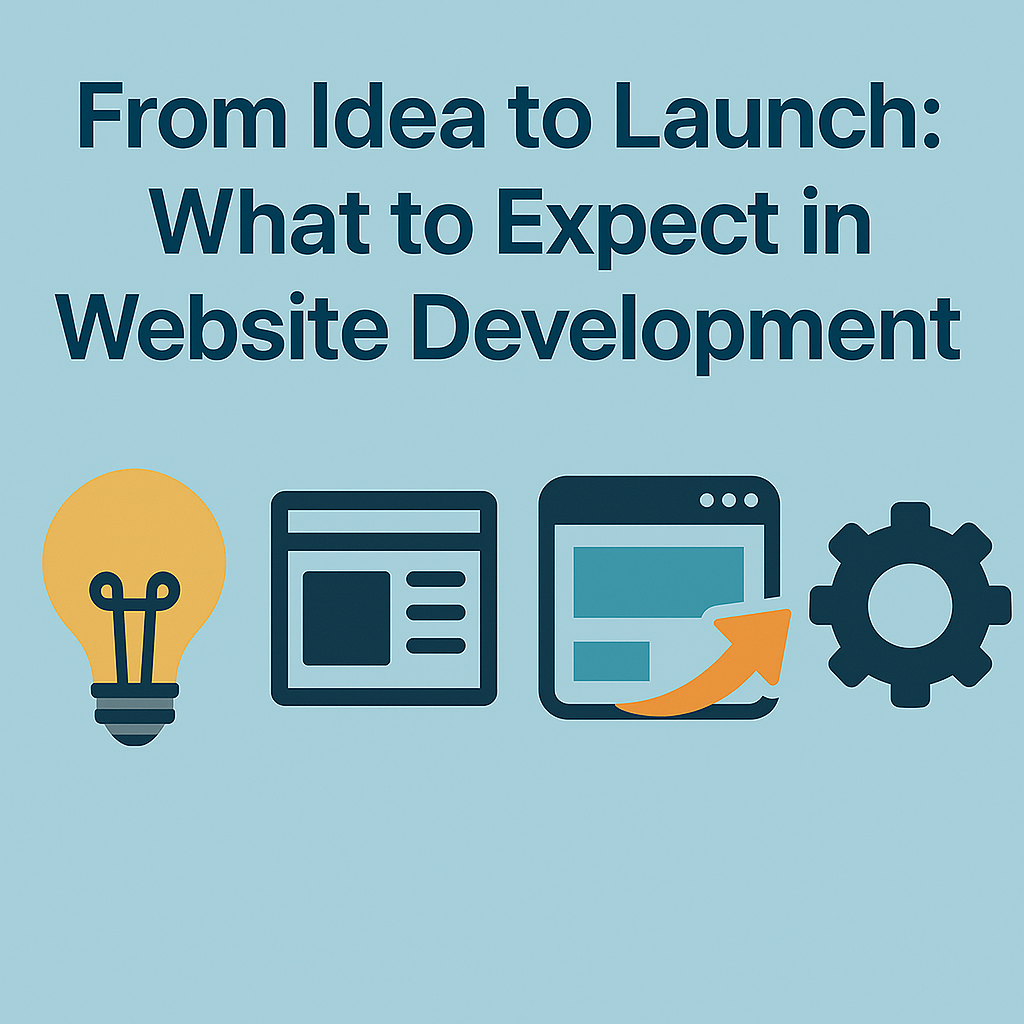Introduction
Building a website is an exciting process that combines creativity, strategy, and technical expertise. Whether you’re an entrepreneur launching a business site, a developer creating a web application, or a creative professional bringing a personal project to life, understanding the development journey is crucial.
Website development involves multiple stages, from brainstorming the initial concept to deploying a fully functional platform. Each phase presents its own challenges and opportunities, and knowing what to expect can streamline the experience.
In this blog post, we will walk through the entire process of website development, from idea to launch, and provide insights into best practices along the way.
Phase 1: Defining Your Vision and Goals
Before diving into the technical aspects of website development, it’s essential to outline your vision and objectives. Ask yourself:
- What purpose will the website serve? (e.g., e-commerce, portfolio, blog, corporate site)
- Who is the target audience?
- What features and functionalities are necessary?
- What is the budget and timeline for development?
Defining these parameters will help guide design and development decisions, ensuring the end product meets both business and user needs.
Key Steps:
- Conduct market research to understand competitors and industry trends.
- Define user personas to tailor the website experience.
- Set measurable goals (e.g., lead generation, engagement, sales conversion).
Phase 2: Planning and Wireframing
Once the goals are set, it’s time to create a roadmap for the website’s structure. This phase focuses on organizing content and functionalities through wireframes and sitemaps.
Wireframes:
Wireframes are visual guides that outline a website’s layout without distractions like colors or images. These act as blueprints, helping designers and developers visualize the site’s structure before coding begins.
Sitemaps:
Sitemaps define the website’s navigation and hierarchy, ensuring a logical flow of information.
Tools for Wireframing & Planning:
- Figma (Collaborative UI/UX design tool)
- Adobe XD (Wireframing & prototyping software)
- Sketch (Wireframe and design tool)
- Balsamiq (Low-fidelity wireframing tool)
Phase 3: Design and User Experience (UX/UI)
The design phase transforms wireframes into visually compelling layouts. A well-designed website balances aesthetics with usability, ensuring a smooth user experience.
UI vs. UX Design:
- User Interface (UI): Focuses on visual elements like colors, fonts, and images.
- User Experience (UX): Ensures intuitive navigation and interaction design.
Best Practices for Design:
- Prioritize responsive design to accommodate various devices.
- Maintain consistent branding with color schemes and typography.
- Use clear call-to-action (CTA) buttons for conversions.
- Optimize for accessibility, ensuring a seamless experience for all users.
Popular design tools:
- Adobe Photoshop & Illustrator (Graphics & UI design)
- Canva (Quick design solutions)
- Figma (Prototyping and team collaboration)
Phase 4: Development and Coding
Once the design is finalized, the development process begins. This phase involves writing code to bring the design and features to life.
Front-End vs. Back-End Development:
- Front-End: Handles the visual and interactive aspects of the website (HTML, CSS, JavaScript).
- Back-End: Manages the server-side logic, databases, and functionalities (PHP, Node.js, Python).
Development Frameworks and Technologies:
- Front-End: React.js, Vue.js, Angular
- Back-End: Node.js, Laravel, Django
- CMS Platforms: WordPress, Drupal, Shopify
During development, ensure the website is:
- Fast and optimized (leveraging caching and image compression).
- Secure (using SSL certificates and encrypted user data).
- SEO-friendly (with proper meta tags and structured data).
Phase 5: Testing and Quality Assurance
Before launch, rigorous testing is necessary to identify and resolve bugs, performance issues, and usability concerns.
Key Testing Areas:
- Functionality Testing: Ensures all links, forms, and integrations work correctly.
- Performance Testing: Tests website speed and loading times.
- Compatibility Testing: Confirms functionality across different browsers and devices.
- Security Testing: Identifies vulnerabilities and prevents data breaches.
Popular testing tools:
- Google Lighthouse (Performance analysis)
- BrowserStack (Cross-browser testing)
- GTmetrix (Page speed analysis)
Phase 6: Deployment and Launch
After successful testing, the website is ready for deployment. This phase involves setting up hosting, configuring domains, and ensuring all assets are optimized for a seamless launch.
Deployment Checklist:
- Choose a reliable hosting provider (e.g., AWS, Bluehost, Hostinger).
- Set up domain registration and SSL certification.
- Perform a final content review to eliminate errors or inconsistencies.
- Optimize SEO settings for search engine visibility.
- Implement analytics tools (Google Analytics, Hotjar) for user insights.
Once deployed, the website is live, but the work doesn’t stop here!
Phase 7: Post-Launch Maintenance & Optimization
A website requires ongoing maintenance to ensure long-term success. Regular updates, performance monitoring, and content enhancements help keep the site fresh and engaging.
Post-Launch Strategies:
- Monitor analytics to track user behavior and improve engagement.
- Update content regularly to maintain relevancy.
- Fix bugs and security vulnerabilities as they arise.
- Optimize performance for faster loading times.
Popular post-launch tools:
- Google Search Console (SEO tracking)
- SEMRush & Ahrefs (SEO performance)
- HubSpot & Mailchimp (Marketing automation)
Conclusion
From ideation to launch, website development is a strategic process that demands careful planning, execution, and optimization. Understanding each stage—goal setting, design, development, testing, and post-launch—helps create a seamless and successful website.
As technology evolves, staying up to date with modern trends and best practices ensures your website remains competitive and user-friendly. Whether you’re launching a new business or upgrading an existing site, following a structured approach guarantees a smooth and efficient development journey.
Now that you have a roadmap, it’s time to bring your website idea to life!
Let me know if you’d like any refinements or additions!



